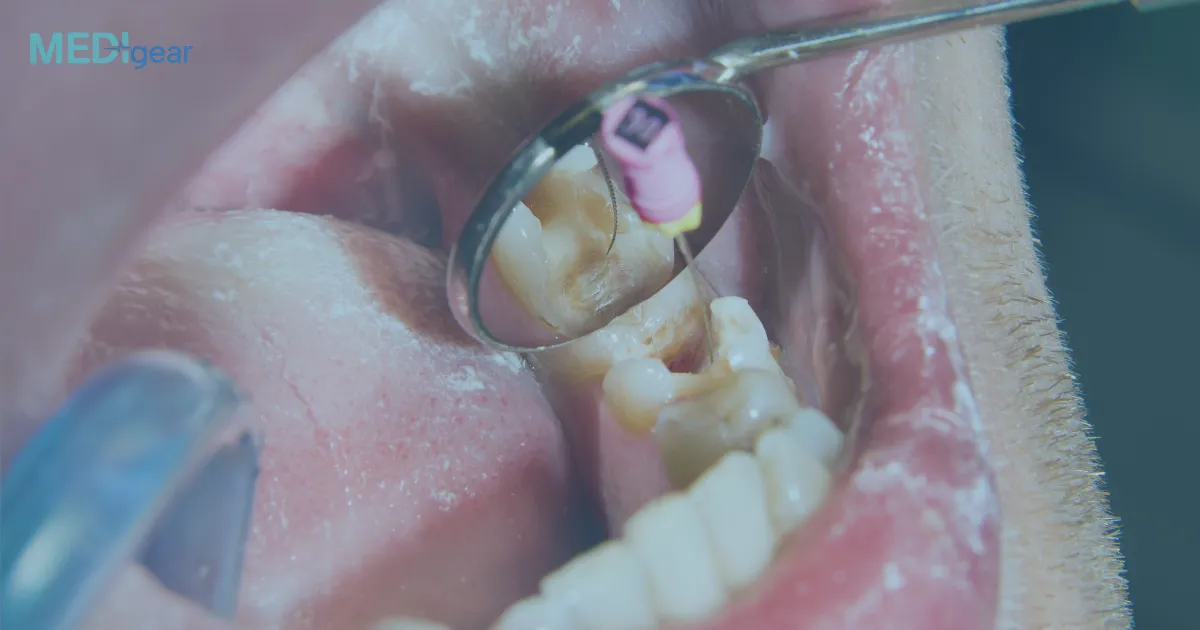Precision is the foundation of successful endodontic therapy, and modern technology is transforming how dentists achieve it. Among these innovations, electronic apex locators (EALs) have become essential tools for accurately determining the working length during root-canal procedures.
By providing real-time, electronic measurements, apex locators help clinicians minimize procedural errors, improve treatment outcomes, and preserve healthy periapical tissues.
Understanding the Role of the Apex in Root-Canal Treatment
In a root-canal procedure, the apical foramen—the natural opening at the tip of the tooth root—marks the point where cleaning and filling should ideally stop.
Reaching this point precisely is critical:
- Over-instrumentation beyond the apex can irritate periapical tissues and delay healing.
- Under-instrumentation leaves infected tissue or debris behind, risking reinfection.
Traditional methods, such as radiographs or tactile estimation, often lack accuracy because of anatomical variations and distortion. Apex locators address these challenges with objective, digital feedback.
How Apex Locators Work
Electronic apex locators operate by measuring electrical impedance or resistance between the endodontic file inside the canal and an electrode attached to the patient’s lip.
As the file moves closer to the apex, the impedance changes predictably, allowing the device to pinpoint the exact location of the apical constriction.
Advanced models use multi-frequency technology for enhanced accuracy—even in canals containing fluid, electrolytes, or blood.
Key Advantages of Apex Locators
- High Precision and Reliability
Apex locators provide accurate working-length determination, reducing dependence on multiple radiographs. - Reduced Radiation Exposure
With fewer X-rays required, patients benefit from lower radiation doses. - Improved Efficiency
Real-time readings help dentists work faster and complete procedures in fewer steps. - Enhanced Patient Comfort
Minimizing over-instrumentation means less postoperative discomfort and faster recovery. - Consistency in Complex Cases
Even in curved or calcified canals, apex locators maintain accuracy where radiographs may fail.
Integration with Modern Endodontic Systems
Contemporary dental units often integrate apex locator functions with endodontic motors, enabling auto-stop features when the file reaches the desired length.
This smart synchronization minimizes human error and ensures consistent clinical performance, particularly in multi-rooted teeth.
Clinical Impact and Future Trends
Studies consistently show that the use of apex locators enhances root-canal success rates, optimizes sealing quality, and reduces the risk of postoperative complications.
Next-generation systems are exploring AI-driven calibration, wireless connectivity, and 3D imaging integration, further refining precision and predictability in endodontic practice.
Conclusion
Apex locators have revolutionized root-canal therapy by combining engineering precision with clinical practicality. Their ability to deliver accurate, real-time measurements supports safer, faster, and more predictable endodontic outcomes—benefiting both patients and practitioners.
Disclaimer: This article is intended for informational purposes only and should not replace professional dental training or clinical judgment. Always consult a certified dental professional for diagnosis and treatment.






